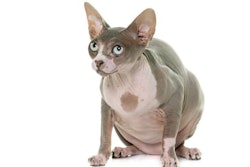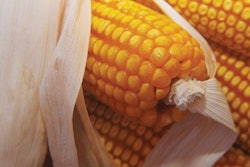
Pet food industry prediction relies on lessons learned in the past, but just as 2020 was unprecedented, so too 2021 looks like a mash-up of 1918, 1861 and 1969. The ongoing pandemic, economic problems and social issues make this a difficult year to predict. However, analysts at Euromonitor International identified trends that may guide consumers as they continue to adapt to turbulent times, in the report “Euromonitor’s Top 10 Global Consumer Trends 2021.”
While Euromonitor didn’t put these trends in terms of pet food, these consumer motivations have ramifications for dog, cat and other pet food companies. The pandemic may have increased pet owner focus on sustainability, convenience, health, thrift and other trends.
Build Back Better
Pet food companies have been moving towards the triple bottom line of people, planet and profits since well before the pandemic. The pandemic accelerated this with 70% of business professionals telling Euromonitor that they believe the coronavirus will increase focus on sustainability.
Wildlife conservation’s economic value to humanity became clear in the COVID-19 pandemic. Genetic evidence, published in Nature, suggests that endangered pangolins may have played a role in the evolution of the SARS-CoV-2 coronavirus, along with bats.
Pet food companies can help pangolin and other wildlife by supporting conservation efforts that reduce the chances of another pandemic. The pet food industry can demand sustainability and husbandry standards for livestock and farmed animals to support biosecurity, animal health and ecological stability. Pet owners tend to be animal lovers, and research suggests that pet food label claims about animal welfare appeal to them. By supporting conservation, pet food brands could show a double layer of support for pet owners by protecting wildlife, while subsequently severing pathways by which diseases pass from exploited wildlife to humans and morph into pandemics.
Craving convenience
The pandemic made a trip to the pet food store more complex and stressful. Pet owners may crave the simple conveniences of life before COVID-19. At the same time, delivery services have made buying pet food easier as more consumers turn to e-commerce. Likewise, subscription services have increased in popularity.
Outdoor Oasis
Going outdoors became a luxury in 2020, as parks and camping sites became some of the few places people could recreate at safe distances. Dogs have always made great camping pals, and the pandemic may spur demand for healthy, on-the-go meal bars for dogs, or similar foods based on people’s camping victuals.
Phygital Reality
By phygital, they mean a combination of physical and digital. For pet food retailers, this has meant a rapid growth in buying products online and picking them up in parking lots. Heaving around a 40-pound sack of dog food from store to home has often been a hinderance to some consumers. The convenience of having a big bag dropped straight into one’s car may have an effect on big bag sales in brick-and-mortar pet retail locations.
Playing with Time
As people’s work routines changed, so did their schedules. In many cases, people found themselves more capable of flexibility. Perhaps this allows them more time with their pets, building the human-animal bond.
Restless and Rebellious
Along with the pandemic, social issues rose to the fore around the world. In 2020, 29% of global consumers were actively involved in political and social issues, according to Euromonitor. Pet food companies and their suppliers could support initiatives to end systemic bigotry.
Safety Obsessed
The near constant fear of infection has grown into a wider concern with hygiene, health and sanitation. In the pet food industry, products marketed with health and wellness claims have seen increasing attention during the pandemic.
Shaken and Stirred
Depression and mental health had a moderate or severe impact on 73% of global consumers’ everyday lives last year, according to Euromonitor. Pets often served as surrogates when people could no longer spend time with their other family members. At the same time, people looked for solace in new pets as demand increased dramatically, especially in the early pandemic.
Thoughtful Thrifters
The pandemic brought with it an economic downturn as hundreds of millions lost their jobs worldwide and economies froze in mid-step. Large bags of conventional and economy brand dry pet foods could see more attention from consumers tightening finances.
Workplaces in New Spaces
For those who suddenly found themselves working from home, the pandemic blurred the boundaries between work and home life. Pets in the workplace became the norm for many of these people.














